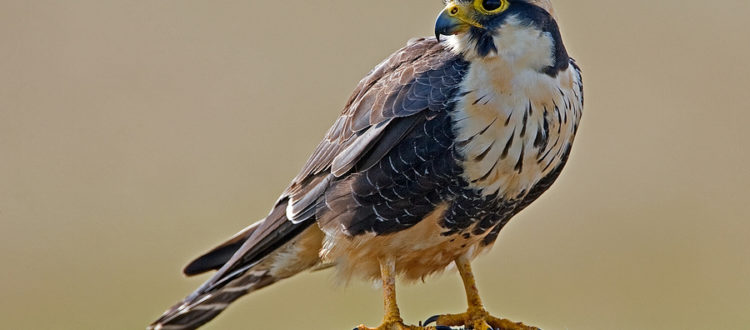Urban Bird Foundation Urges Congress to Fully Fund Endangered Species Act
Urban Bird Foundation joined Center for Biological Diversity and Defenders of Wildlife urging the U.S. House of Representatives Appropriations Committee to increase the budget for endangered species conservation from about $252 million to $486 million.
Hundreds of endangered species receive less than $1,000 a year for their recovery, according to the U.S. Fish and Wildlife Service. Many species receive no funding at all from the agency.
“The Endangered Species Act has been starved for decades, and incredible animals and plants have been pushed toward extinction because of that,” said Stephanie Kurose, an endangered species policy specialist at the Center for Biological Diversity. “Enough is enough. Congress should fully fund the Act so that not one more species is lost forever.”
As the letter notes, to truly put imperiled species on the path to recovery, the Fish and Wildlife Service requires a budget of $486 million across five programs starting in fiscal year 2020. Critically, this includes ensuring that every listed species receives a minimum of $50,000 per year for recovery.
“With more than 100 birds currently listed as endangered or threatened under the Endangered Species Act, we must do more to prevent their continued decline,” said Scott Artis, Executive Director of Urban Bird Foundation. “The Endangered Species Act’s primary goal is to prevent the extinction of imperiled life and to ensure recovery of those populations. This cannot happen without adequate funding – it’s time to give species the help they deserve.”
Read the Letter
Dear Chairwoman Lowey and Ranking Member Granger,
Last month, the United States lost another species forever: a species of tree snail from Oahu whose last individual, George, died after 14 years in captivity. With the shoestring budget that they had, conservationists did try to find a mate for George, but were unsuccessful. Like other losses in the ongoing biodiversity crisis, this extinction is a tragic one for the United States, a nation with the strongest wildlife conservation law in the world, the Endangered Species Act. Despite the protections the Act provides, decades of underfunding have held it back from realizing its full potential. Too many species sit in limbo at the edge of extinction — or as with George’s passing — are being lost altogether, when we can ensure they remain part of our rich natural heritage.
On behalf of our millions of members and supporters, we request that you provide the U.S. Fish and Wildlife Service the critical funding the agency desperately requires for endangered species conservation and recovery. As we outline below, the data show that the Service requires a budget of $481 million dollars across five programs to begin to make up for lost ground and put species on the path to recovery, starting in fiscal year 2020. Critically, this includes ensuring every listed species receives a minimum of $50,000 per year for recovery. This funding package will allow the Endangered Species Act to be implemented in the way Congress intended when it dedicated our country to protecting the species and the habitats that need it most.
Listing
Listing a species — placing it under the Endangered Species Act’s care — is the single best means of averting extinction. The Endangered Species Act is an incredible success for protecting species; 99% of listed species are still with us today. In contrast, nearly 50 unlisted species have been declared extinct while waiting for protections because of funding shortfalls. The FWS seven-year listing workplan details how the agency will prioritize the evaluation of over 350 species for listing and is supported by many stakeholders. At current funding rates, it will take the Fish and Wildlife Service at least 10 years to process all of the remaining species that the agency has identified as potentially needing protection under the Act. Based on the time and cost required to evaluate species for listing and status changes (such as delisting), we recommend increasing the listing program budget to $51 million in 2020 and thereafter. This recommendation is three times current funding and would allow the Service to process the entire listing backlog in less than four years. To ensure species receive the detailed scientific analyses they need to determine if they need to be protected by the Act, we urge Congress to fully fund the listing program.
Recovery
The Service’s recovery program includes planning for recovery, implementing recovery actions, and tracking recovery progress. Because funding drives recovery progress, it is essential to provide sufficient resources for the recovery program: it is how the Service can ensure threats are minimized or removed so species are conserved. Unfortunately, recovery appropriations have been essentially flat over the past two decades, and when controlling for inflation and the number of listed species, have declined since 2010 (purple line):
Endangered Species Act funding for the U.S. Fish and Wildlife Service has remained flat and even declined since 2010. Note that the funding for two components shifts after 2014 because of budgeting changes, but does not change the overall pattern. Data from FWS, shown in inflation-adjusted 2018 dollars.
More concerningly, according to the reports provided by the Fish and Wildlife Service that are required by Congress each year, hundreds of endangered species receive less than $1000 a year for their recovery, with many receiving no funding from the Service at all. We strongly recommend that Congress provide a minimum of $50,000 per year per species for recovery to make sure that no species slips through the cracks.
Accordingly, Congress can significantly reverse the slide of more animal and plants towards extinction, and put every species on a path to recovery by providing the Service with $192 million for the recovery program in 2020, which is more than double the current—and insufficient—funding levels. This includes $43.8 million for recovery planning, which is essential to guiding species back from the brink; $137.8 million for recovery actions, which range from reducing poaching to invasive species control; and $10.5 million for conservation status reviews that need to occur every five years.
Planning and Consultation
The Planning and Consultation program includes key processes that ensure species receive fundamental protections while allowing flexibility for infrastructure and other forms of development. The Service evaluates (“consults on”) the effects of over 10,000 federal actions on listed species per year to help protect species and their habitat—including conducting highly technical analyses for issues such as pesticide effects—as part this program. Over the past two decades, the Service has worked with states, counties, and private landowners across the country to create over 1,000 Habitat Conservation Plans for to help conserve species. But this program is stressed: appropriations have been flat or declining since the early 2000’s; nearly 1/5 of formal project evaluations run over deadlines; and the funding needed for conservation planning has dropped in past years, reducing the number of plans that have been completed.
There are opportunities to improve the efficiency and effectiveness of these processes, such as through the widespread adoption of technologies such as the Services’ Integrated Planning and Conservation (IPaC) system and the addition of dedicated personnel to monitor compliance with the Act. For planning and consultation to be maximally effective and efficient, Congress needs to provide the Service with $130.05 million in FY 2020 and beyond. This includes $120 million for standard consultations; an additional $750 thousand for pesticide consultations and $450 thousand for IPaC development; $7.5 million for voluntary conservation; and $1.35 million for basic compliance monitoring that does not currently exist.
Conservation and Restoration
The Candidate Conservation component of the Conservation and Restoration program provides a key mechanism to help conserve species by improving their habitat and removing threats before they need to be listed. Early conservation action means species are more secure than waiting until species are on the brink of extinction, and it is much more cost-effective. The Service currently has 23 candidate species designated, and assuming the cost of conserving candidate species is half of the cost and time of recovery, the Service needs $8M for FY 2020-2024 to efficiently keep species back from the brink of needing the protections of the Act.
Cooperative Endangered Species Conservation
Congress recognized the need for the federal government to cooperate with the states and others to conserve species, and the Cooperative Endangered Species Conservation Fund (CESCF) serves as an essential source of funding for states and conservation on private lands. Critically, at least half of all listed species spend a portion of their life cycle on private lands, and we need to provide the resources to facilitate recovery by everyone. The states cannot do this alone, whether because they lack the legal tools or the funding and other necessary commitments. To reverse the gap from previous funding shortfalls and match the current need for state and private lands conservation, the Service requires CESCF funding of at least $100,000,000 for FY 2020 and beyond.
* * *
The passing of George and the larger risk of mass extinction is a wake-up call to society and Congress that more must be done. Conserving our planet’s natural heritage is a monumental challenge, but we can do more, and we know what to do for our most imperiled wildlife and plants. That means providing sufficient funding for the listing program to ensure species are recognized as imperiled; for planning and consultation to ensure basic protections are applied to species; for recovery planning and recovery work; and for collaborative work across public and private lands to ensure we work together to protect our natural heritage. The sooner we act, the more species can be saved from extinction, and the faster species can be recovered and delisted. Thank you for your consideration.


